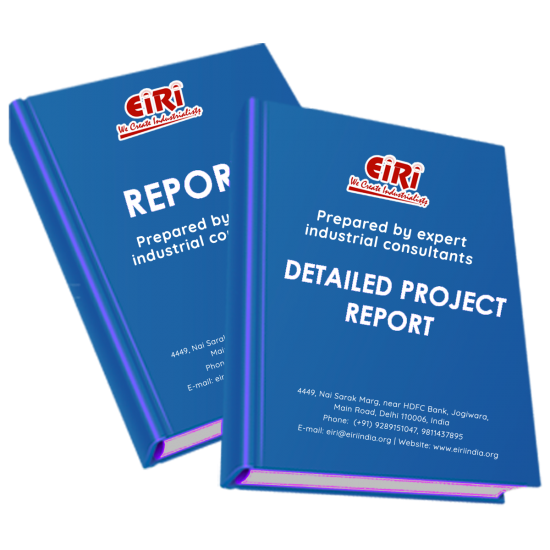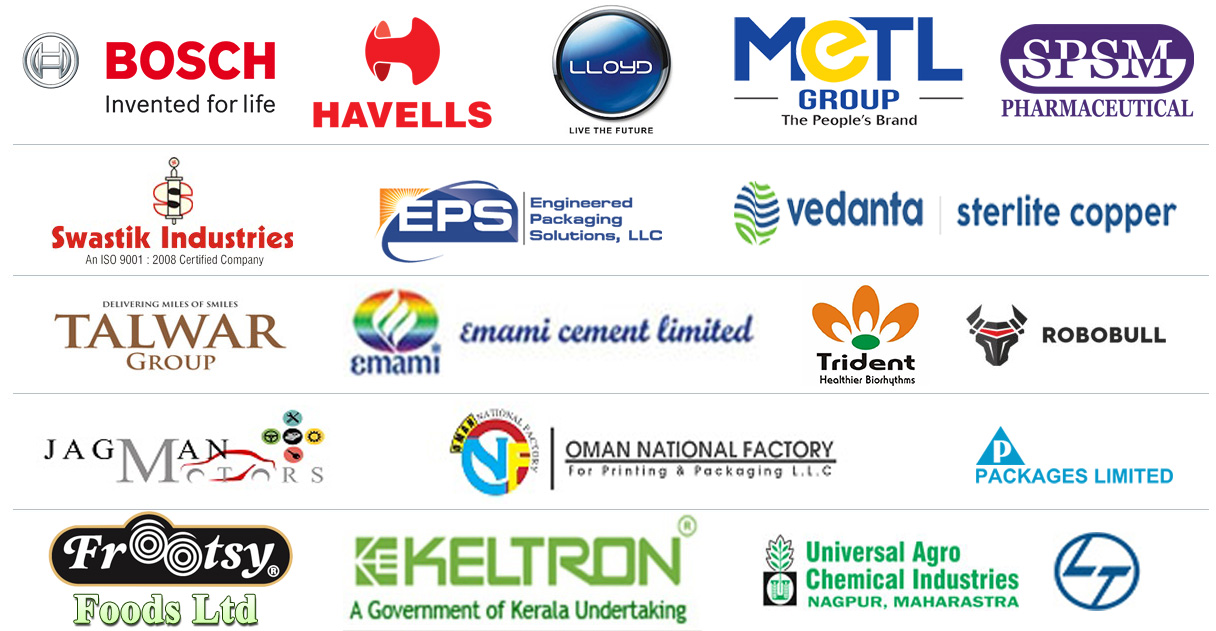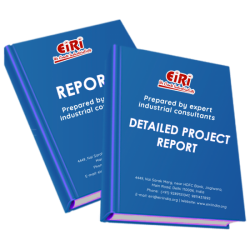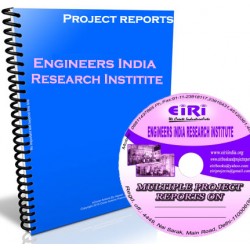Detailed Project Report on Fatty Acid from Palm Oil

- More than 40 years of experience
- Managed by expert industrial consultants
- ISO 9001-2015 Certified
- Registered under MSME, UAM No: DL01E0012000
- 24/5 Research Support
Get your quesries resolved from an industry expert. Ask your queries before report or book purchase. - Custom Research Service
Speak to the our consultant to design an exclusive study to serve your research needs. - Quality Assurance
All reports are prepared by highly qualified consultants & verified by a panel of experts. - Information Security
Your personal & confidential information is safe & secure.
FATTY ACID FROM PALM OIL
[EIRI/EDPR/4194] J.C.: 2354US$
INTRODUCTION
OLEOCHEMICALS
Oleo Chemicals are chemicals derived from Plant and Animal Fats. They are analogous to petrochemicals derived from petroleum. The formation of basic oleochemical substances like Fatty Acids, Fatty Acid Methyl Esters (FAME), Fatty Alcohols, Fatty Amines and Glycerol are by various chemical and enzymatic reactions.
Fatty Acids
Fatty acids are basic oleochemicals, formed through the splitting of vegetable oils into fatty acids and glycerin. The refined fatty acids are used in production of natural chemicals, which in turn are used in the manufacturing of paper chemicals, lubricants, detergents, plastics, and more. Fatty acids may also be used in the production of tires and candles.
This section will concentrate on Fatty Acids produced from natural fats and oils (i.e. not those derived from petroleum products). Firstly though, we will recap briefly on Nomenclature. We spent some time clarifying the structure of oleochemicals and we saw how carbon atoms link together to form carbon chains of varying length (usually even numbered in nature, although animal fats from ruminant animals can have odd-numbered chains).
A fatty acid has at least one carboxyl group (a carbon attached to two oxygens (-O) and a hydrogen (-H), usually represented as -COOH in shorthand) appended to the carbon chain (the last carbon in the chain being the one that the oxygen and hydrogen inhabit). We will only be talking about chains with one carboxyl group attached (generally called “monocarboxylic acids”).
The acids can be named in many ways, which can be confusing, so we will try and keep it as simple as possible. The table opposite shows the acid designations as either the “length of the carbon chain” or the “common name”. While it is interesting to know the common name for a particular acid, we will try to use the chainlength in any discussion so you do not have to translate. Finally, it is usual to speak about unsaturated acids using their chainlength suffixed with an indication of the number of double bonds present. Thus, C16=1 is the C16 acid with one double bond; C18=2 is the C18 acid with two double bonds and so on.
SELECTING RAW MATERIALS
FOR FATTY ACID PRODUCTION
In principle, fatty acids can be produced from any oil or fat by hydrolytic or lipolytic splitting (reaction with water using high pressure and temperature or enzymes). In practice, only around eight or so fats/oils contribute to the bulk of fatty acid production, with some variation depending on geography.
EUROPEAN UTILISATION NORTH AMERICAN UTILISATION
Tallow Type 69% 55%
Coconut/Palm Kernel 9% 15%
Soya 7% 4%
Tall Oil Fatty Acid 11% 24%
Other 4% 2%
The utilisation of different oils produces acids with differing carbon chainlength distributions which allows the market to characterise a fatty acid into groups according to the major chainlength featuring in the acid.
COST ESTIMATION
Plant Capacity 210 MT/Day
Land & Building (30,000 sq.mt.) US$ 23.00 Lac
Plant & Machinery US$ 11.79 Lac
Working Capital for 2 Months US$ 1.77 Cr
Total Capital Investment US$ 2.13 Cr
Rate of Return 52%
Break Even Point 24%
CONTENTS
INTRODUCTION
OLEOCHEMICALS
FATTY ACIDS
SELECTING RAW MATERIALS FOR FATTY ACID PRODUCTION
THE PRODUCTION PROCESS
POST HYDROLYSIS PROCESSES
USES OF FATTY ACIDS
PROPERTIES
COMPOSITION
USES & APPLICATION
B.I.S. SPECIFICATION
MARKET POSITION
MARKET HIGHLIGHTS
COMPANIES PROFILED
MANUFACTURING PROCESS
OLEOCHEMICALS
FATTY ACID/GLYCERINE & ACID OILS
FATTY ACID PLANTS
PROCESS DESCRIPTION
A) DE-AERATION
B) SPLITTING
C) FATTY ACID DRYING
D) GLYCERIN-WATER PRE-CONCENTRATION
TO PRODUCE HIGH PURITY FATTY ACID FRACTIONS PROCESS DESCRIPTION
A) DE-AERATION
A) FRACTIONATION (2-COLUMN SYSTEM) FATTY
REMOVAL OF LOW & HIGH BOILING COMPONENTS FROM FATTY ACIDS
DISTILLATION
GLYCERIN PLANTS
GLYCERINE REFINING PROCESS
GLYCERINE REFINING PROCESS INVOLVES THE FOLLOWING STEPS:
PROCESS DESCRIPTION
A) DEAERATION
B) DISTILLATION
C) CONDENSATION
A) BLEACHING
B) SALT REMOVAL
ACID OIL PLANT
PROCESS DESCRIPTION
GLYCERIN REFINING PLANT
DETAILED CONCEPTS OF GLYCERINE RECOVERY PLANT
GLYCERINE RECOVERY PROCEDURE
PURPOSE OF LYE TREATMENT
METHOD OF LYE TREATMENT
THE TESTS PERFORMED AT THIS STAGE ARE AS FOLLOWS:
TREATMENT OF SWEET WATER
FIRST TREATMENT
SECOND TREATMENT
EVAPORATION
CONTINUOUS FINISHER
PURIFICATION/REFINING OF CRUDE GLYCERINE
THE IMPURITIES PRESENT IN THE CRUDE GLYCERINE INCLUDE:
NOTE ON REFINING OF CRUDE GLYCERINE
REFINING OF CRUDE GLYCERINE
SOME PLANTS FOR REFINING CRUDE GLYCERINE ARE LISTED BELOW:
MANUFACTURERS/SUPPLIERS/EXPORTERS
RAW MATERIAL SUPPLIERS
MANUFACTURERS OF FATTY ACID
PLANT & MACHINERIES SUPPLIERS ADDRESS
VACUUM DISTILLATION PLANT
BOILER
STORAGE TANK
WEIGHING MACHINES
PACKAGING MACHINE
D.G. SET
LABORATORY TESTING EQUIPMENTS
PRINCIPLES OF PLANT LAYOUT
PLANT LOCATION FACTORS
PRIMARY FACTORS
1. RAW-MATERIAL SUPPLY:
2. MARKETS:
3. POWER AND FUEL SUPPLY:
4. WATER SUPPLY:
5. CLIMATE:
SPECIFIC FACTORS
6. TRANSPORTATION:
A. AVAILABILITY OF VARIOUS SERVICES AND PROJECTED RATES
7. WASTE DISPOSAL:
8. LABOR:
9. REGULATORY LAWS:
10. TAXES:
11. SITE CHARACTERISTICS:
12. COMMUNITY FACTORS:
13. VULNERABILITY TO WARTIME ATTACK:
14. FLOOD AND FIRE CONTROL:
EXPLANATION OF TERMS USED IN THE PROJECT REPORT
1. DEPRECIATION:
2. FIXED ASSETS:
3. WORKING CAPITAL:
4. BREAK-EVEN POINT:
5. OTHER FIXED EXPENSES:
6. MARGIN MONEY:
7. TERM LOANS:
8. TOTAL LOAD:
9. LAND AREA/MAN POWER RATIO:
UTILITIES
WATER TREATMENT PLANT
STEAM GENERATING SYSTEM
POWER
WORKING
TOTAL MANPOWER AND PAYROLL
UTILITIES
WATER
WATER QUALITY PARAMETERS FOR PROCESSED WATER:
STEAM
POWER
EFFLUENT TREATMENT AND DISPOSAL
THE WASTE FROM THE FOOD PROCESSING OPERATIONS MAY BE CLASSIFIED ON THE BASIS OF:
STANDARDS
TOLERANCE LIMITS FOR INDUSTRIAL EFFLUENT DISCHARGE
WASTE TREATMENT
PRIMARY TREATMENT
ANAEROBIC TREATMENT
ANAEROBIC TREATMENT HAS THE ADVANTAGES OF
SECONDARY TREATMENT
TERTIARY TREATMENT
SOLIDS CONCENTRATION
TYPICAL WASTE SOLIDS CHARACTERISTICS
EQUIPMENT REQUIREMENTS
LIST OF MAJOR FOREIGN INDUSTRIES FOR RAW MATERIALS
PALM OIL:-
CAUSTIC SODA:-
SODIUM CARBONATE (SODA ASH):-
PHOSPHORIC ACID:-
HYDROCHLORIC ACID:-
SULPHURIC ACID:-
BLEACHING EARTH/ACTIVATED CARBON:-
FERRIC CHLORIDE:-
ALUMINIUM SULPHATE:-
SODIUM CHLORIDE:-
HYDROGEN PEROXIDE:-
SODIUM CHLORIDE:-
MAJOR INDIAN INDUSTRIES
MACHINERY PHOTOGRTAPH
QUALITY CONTROL
PACKAGING TYPES
DOCUMENTS REQUIRED FOR LICENSES
LIST OF DOCUMENTS:
ORGANIZATION CHART
PLANT LAYOUT
TURNKEY CONSULTANT
SWOL ANALYSIS
STRENGTHS
OPPORTUNITIES
WEAKNESS
LIMITATIONS
IMPLEMENTATION SCHEDULE
PLANT LOCATION (AN OVERVIEW OF THAILAND)
CAPITAL:
AREA
CLIMATE
APPENDIX – A:
01. PLANT ECONOMICS
02. LAND & BUILDING
03. PLANT AND MACHINERY
04. OTHER FIXED ASSESTS
05. FIXED CAPITAL
06. RAW MATERIAL
07. SALARY AND WAGES
08. UTILITIES AND OVERHEADS
09. TOTAL WORKING CAPITAL
10. TOTAL CAPITAL INVESTMENT
11. COST OF PRODUCTION
12. TURN OVER/ANNUM
13. BREAK EVEN POINT
14. RESOURCES FOR FINANCE
15. INSTALMENT PAYABLE IN 5 YEARS
16. DEPRECIATION CHART FOR 5 YEARS
17. PROFIT ANALYSIS FOR 5 YEARS
18. PROJECTED BALANCE SHEET FOR (5 YEARS)
How to Make Project Report?
Detailed Project Report (DPR) includes Present Market Position and Expected Future Demand, Technology, Manufacturing Process, Investment Opportunity, Plant Economics and Project Financials. comprehensive analysis from industry covering detailed reporting and evaluates the position of the industry by providing insights to the SWOT analysis of the industry.
Each report include Plant Capacity, requirement of Land & Building, Plant & Machinery, Flow Sheet Diagram, Raw Materials detail with suppliers list, Total Capital Investment along with detailed calculation on Rate of Return, Break-Even Analysis and Profitability Analysis. The report also provides a birds eye view of the global industry with details on projected market size and then progresses to evaluate the industry in detail.
We can prepare detailed project report on any industry as per your requirement.
We can also modify the project capacity and project cost as per your requirement. If you are planning to start a business, contact us today.
Detailed Project Report (DPR) gives you access to decisive data such as:
- Market growth drivers
- Factors limiting market growth
- Current market trends
- Market structure
- Key highlights
Overview of key market forces propelling and restraining market growth:
- Up-to-date analyses of market trends and technological improvements
- Pin-point analyses of market competition dynamics to offer you a competitive edge major competitors
- An array of graphics, BEP analysis of major industry segments
- Detailed analyses of industry trends
- A well-defined technological growth with an impact-analysis
- A clear understanding of the competitive landscape and key product segments
Need Customized Project Report?
- Ask for FREE project related details with our consultant/industry expert.
- Share your specific research requirements for customized project report.
- Request for due diligence and consumer centric studies.
- Still haven't found what you're looking for? Speak to our Custom Research Team
About Engineers India Research Institute:
Note: We can also prepare project report on any subject based on your requirement and country. If you need, we can modify the project capacity and project cost based on your requirement.
Our Clients

Our Approach
- Our research reports comprehensively cover Indian markets (can be modified as per your country), present investigation, standpoint and gauge for a time of five years*.
- The market conjectures are produced on the premise of optional research and are cross-accepted through associations with the business players
- We use dependable wellsprings of data and databases. What's more, data from such sources is handled by us and incorporated into the report
Why buy EIRI reports?
- Our project reports include detailed analysis that help to get industry Present Market Position and Expected Future Demand.
- Offer real analysis driving variables for the business and most recent business sector patterns in the business
- This report comprehends the present status of the business by clarifying a complete SWOT examination and investigation of the interest supply circumstance
- Report gives investigation and top to bottom money related correlation of real players/competitors
- The report gives gauges of key parameters which foresees the business execution























